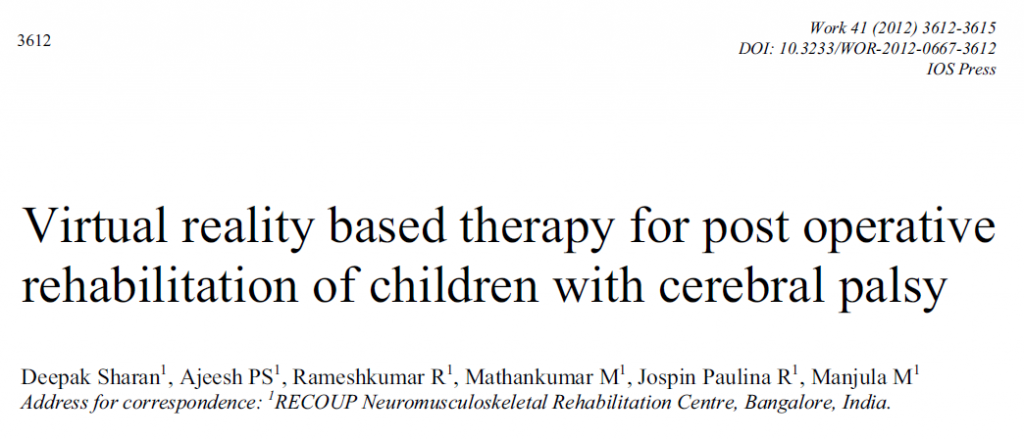Virtual reality is the use of interactive replication created with computer hardware and software to impart users with opportunities to engage in environments that appear to feel similar to real world objects and events. The commonest rehabilitation program of cerebral palsy children involves stretching, strengthening, mobilization and various other activities, whereas the use of virtual reality based training (VRBT) for rehabilitation of cerebral palsy is not common.
To understand the effect of VRBT the authors undertook the study. Twenty nine subjects participated (study group – 14 and control group – 15). Outcome measures were MACS, PBS, level of participation, motivation, cooperation and satisfaction of the child.
Results revealed that balance and manual ability were significantly improved in both the groups (Balance: study: t-2.28, p<0.05; control: t-3.5, p<0.01; Manual ability: study: t-5.58, p<0.001; control: t-7.06, p<0.001). PBS had significantly greater improvement in the study group (t-t-2.02, p<0.05). Level of participation, motivation, cooperation and satisfaction of the child were also reported to be significantly higher among the study group as compared with control group.
To the author’s best knowledge, this is the first study on using the VR-based therapy for the postoperative rehabilitation of children with CP which need further elaboration with larger sample size.
